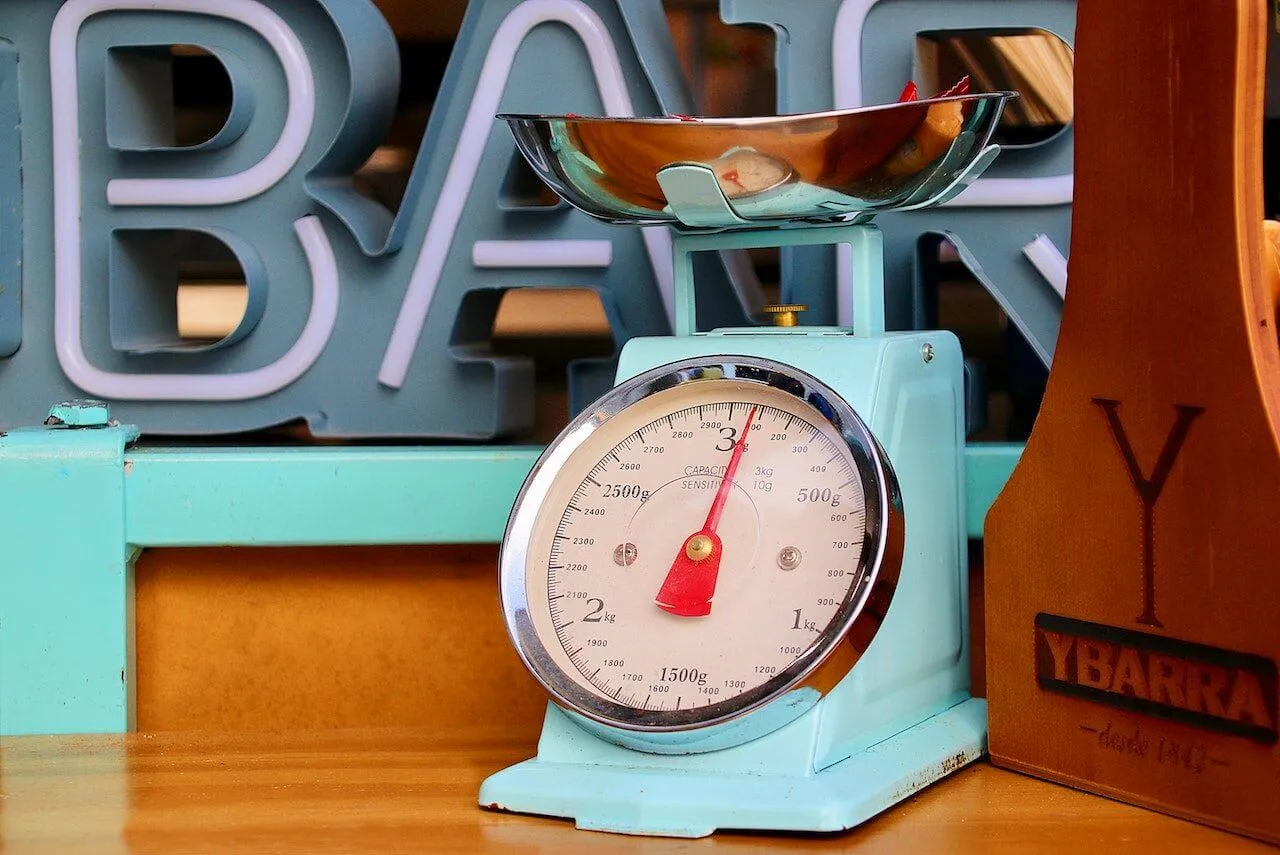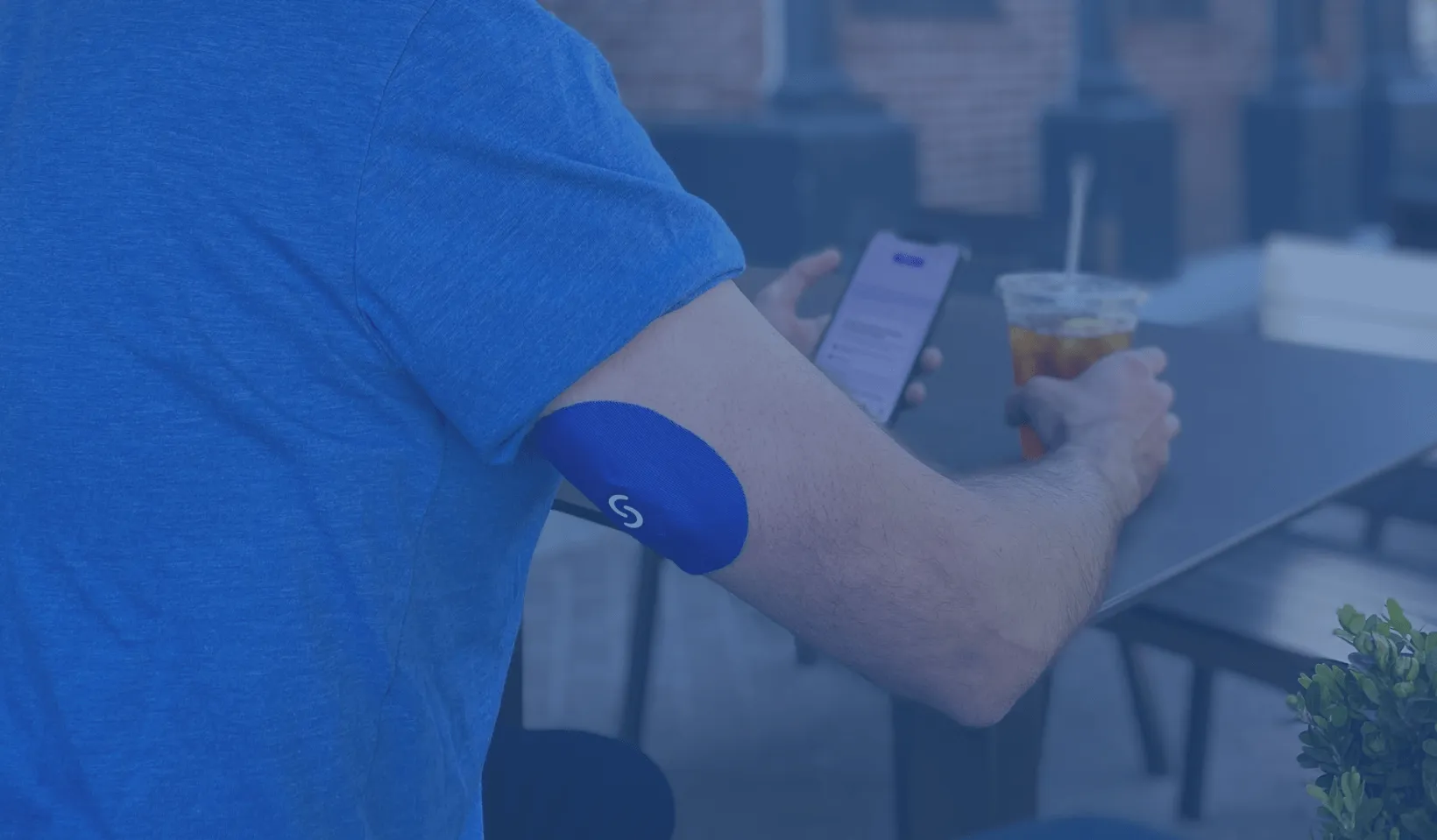What Is a CGM Device?
A continuous glucose monitoring (CGM) device is an FDA-approved tool with three components: a glucose sensor, which is implanted pain-free; a transmitter, which shares the data; and a smartphone app which receives the data. The CGM takes sample readings of glucose levels every fifteen minutes by measuring glucose in the interstitial fluid beneath your skin. CGM devices are being researched as a tool to help people lose weight.
<p class="pro-tip"><strong>Learn more about </strong><a href="/blog/what-is-a-continuous-glucose-monitor">how CGMs work</a></p>
The Keto Diet
The ketogenic (keto) diet is a high-fat, low-carb diet that excludes most carbs from your diet so you enter a state of ketosis.
Ketosis is a metabolic state in which your body uses ketones for energy, instead of glucose. When you are in ketosis, your body becomes more efficient at burning fat for energy.1 You may experience a range of other benefits, including weight loss, improved mental clarity, and decreased inflammation.
<p class="pro-tip"><strong>Learn about </strong><a href="/blog/is-keto-healthy-for-weight-loss">keto and weight loss</a></p>
Keto Diet and Blood Sugar
Blood glucose readings trend downward while following the keto diet.1 Without eating carbs, you decrease the available glucose that can be absorbed into your bloodstream, so your blood sugar levels will be lower.
What Should Your Blood Sugar Be in Ketosis?
While your body is in ketosis you can expect your CGM device to report readings of 70-90 mg/dL (3.9 mmol/L) or slightly below these values.
You may feel your best at the higher end of the range, and that is OK. There is no one correct reading for everybody, which is why a range exists.
Keto and Fasting Glucose Levels
A fasting blood glucose reading is taken first thing in the morning. It provides a baseline measure and is a great way to check your blood sugars before you start your day.
People following the keto diet (or a low-carb diet) for over one year can experience high fasted glucose readings. Although it can feel surprising, it is very common.
Adaptive Glucose Sparing
Why the keto diet leads to higher fasting glucose is still being debated. The strongest theory suggests that, because your muscles have adapted to primarily using fat for fuel, they no longer need to absorb glucose.3 The unabsorbed sugars deplete over the course of the day, and your numbers eventually normalize. More data is needed, however, to corroborate these claims.

How Long Does it Take for Keto to Improve Insulin Resistance?
A small study from 2005 found that participants experienced improved insulin resistance after following a low-carb diet for only 14 days, compared to the control group who still ate carbs.6
Similar findings were established in a study completed one year later. The 2006 study was committed to a longer research period and registered 66 participants. After 56 weeks of following the keto diet, researchers found an improvement in the fasting circulating glucose.7
These studies demonstrate that both short-term and long-term commitments to low carb and keto diets should improve insulin resistance.
Which is Better For Improving Insulin Resistance, Keto or Low Carb?
A low-carb diet is slightly different from keto because the daily carb allowance is higher. On a low-carb diet it is recommended to stay below 50-100g of carbs per day. The keto diet restricts carbs to fewer than 50g per day. A regular diet with no carb restrictions often includes approximately 250g of high-quality carbs.8
Both keto and low-carb diets can help improve insulin resistance, so you should follow the most sustainable diet for your lifestyle.

Using a CGM to Understand How Keto Impacts You
With a CGM you can deepen your understanding of how keto or a low-carb diet impacts your blood sugar.
You should approach blood sugar data collection as scientifically as possible. That means experimenting with specific parts of your lifestyle individually so you can be sure which change caused the results.
There is no wrong place to start: if you want to see how exercise affects your blood sugars, start by tracking how your blood sugar levels are different on the days when you incorporate physical activity, compared to the days you are sedentary. You may go deeper and investigate how different types of exercise impact your blood sugars.
You can also use your CGM device to track how the timing of your meals, or specific foods, affect your blood sugars.
<p class="pro-tip"><strong>Go deeper: </strong><a href="/blog/cgm-data-weight-loss">using CGM data to crack the weight loss code</a></p>
Benefits of Continuous Glucose Monitoring on Keto
When you start the Keto Diet you want to make sure you are hitting your blood glucose targets (70-90mg/dL). Using a CGM device to monitor blood sugar trends throughout the day will confirm if you are meeting your goal.
CGM data can show you the effect the keto diet has on your blood sugars but it does not measure ketones in your blood; it only measures glucose. Having access to this type of data can benefit people on the keto diet in several ways by:
- Showing you evidence of change when starting out
- Keeping you motivated to stick with a low-carb meal plan
- Helping you understand what spikes your blood sugar
If you’ve hit a weight-loss plateau or simply aren’t losing weight on keto, analyzing your unique blood glucose response to different foods can be the key to understanding why.
How to Get Started With a CGM and the Signos App
Signos offers different packages to help you get started with a CGM device. When you first get started you will be asked to log your food intake so the Signos platform can better understand your body’s unique glucose response to different foods. After this baseline is established, you will receive personalized recommendations on foods including the time of day that is best for your body, and when exercise could be most effective.
Access to your blood glucose data and patterns can help you move forward using keto on your weight loss journey as safely and effectively as possible.
Topics discussed in this article:
References
- Paoli, A., Rubini, A., Volek, J. S., & Grimaldi, K. A. (2013). Beyond weight loss: a review of the therapeutic uses of very-low-carbohydrate (ketogenic) diets. European Journal of Clinical Nutrition, 67(8), 789–796. https://doi.org/10.1038/ejcn.2013.116
- CDC - Center For Disease Prevention. (2022). Diabetes Testing. Centers for Disease Control and Prevention - Blood Sugar Ranges. Retrieved June 30, 2022, from https://www.cdc.gov/diabetes/basics/getting-tested.html#:%7E:text=Fasting%20Blood%20Sugar%20Test,higher%20indicates%20you%20have%20diabetes
- Mullens, A. (2021). Is your fasting blood glucose higher on low carb or keto? Five things to know. Diet Doctor - Adaptive Glucose Sparing. Retrieved June 30, 2022, from https://www.dietdoctor.com/low-carb/fasting-blood-glucose-higher
- O'Neal TB, Luther EE. Dawn Phenomenon. [Updated 2021 May 23]. In: StatPearls [Internet]. Treasure Island (FL): StatPearls Publishing; 2022 Jan-. Available from: https://www.ncbi.nlm.nih.gov/books/NBK430893/
- Ebbeling, C. B., Knapp, A., Johnson, A., Wong, J. M. W., Greco, K. F., Ma, C., Mora, S., & Ludwig, D. S. (2021). Effects of a low-carbohydrate diet on insulin-resistant dyslipoproteinemia—a randomized controlled feeding trial. The American Journal of Clinical Nutrition, 115(1), 154–162. https://doi.org/10.1093/ajcn/nqab287
- Boden, G., Sargrad, K., Homko, C., Mozzoli, M., & Stein, T. P. (2005). Effect of a Low-Carbohydrate Diet on Appetite, Blood Glucose Levels, and Insulin Resistance in Obese Patients with Type 2 Diabetes. Annals of Internal Medicine, 142(6), 403. https://doi.org/10.7326/0003-4819-142-6-200503150-00006
- Dashti, H. M., Al-Zaid, N. S., Mathew, T. C., Al-Mousawi, M., Talib, H., Asfar, S. K., & Behbahani, A. I. (2006). Long Term Effects of ketogenic Diet in Obese Subjects with High Cholesterol Level. Molecular and Cellular Biochemistry, 286(1–2), 1–9. https://doi.org/10.1007/s11010-005-9001-x
- CDC - Center For Disease Prevention. (2019). FastStats. Diet/Nutrition Stats. Retrieved June 30, 2022, from https://www.cdc.gov/nchs/fastats/diet.htm


.webp)

.svg)





.webp)




.svg)
.svg)
.svg)
.svg)
.svg)
.svg)
.svg)
